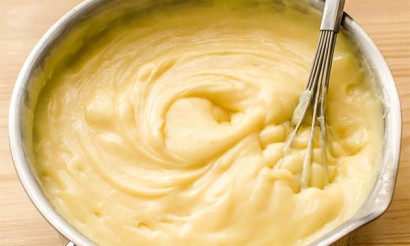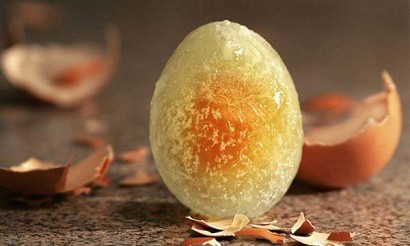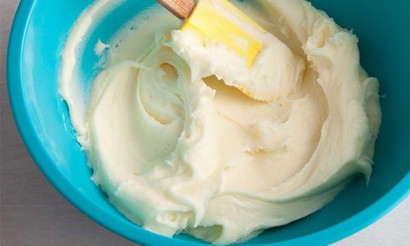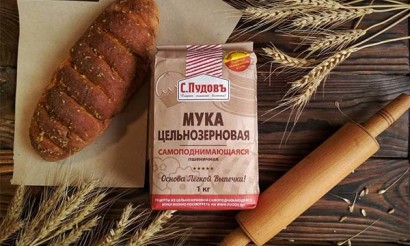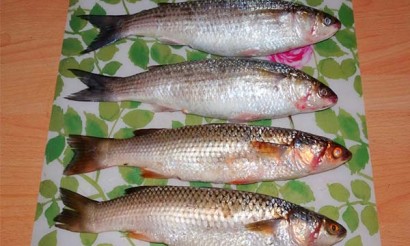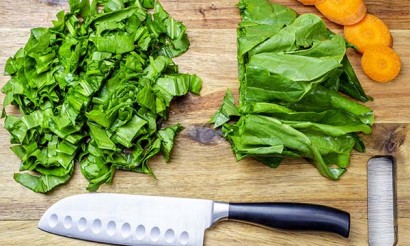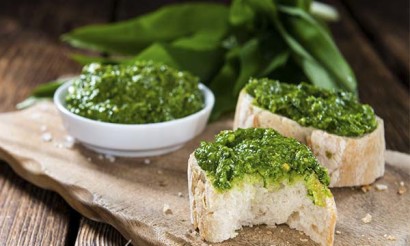What foods and drinks do you add ginger to?
Ginger is considered a useful medicinal plant. It belongs to the perennials of the Ginger family. They are united by similar features and properties, but there are also significant differences. This family includes 144 varieties, but only a few have medicinal properties.
- What is ginger
- Types
- Useful properties of ginger
- For women
- For Men
- How to choose the right ginger
- Rule #1
- Rule #2
- Rule #3
- Rule #4
- In what dishes and drinks can be added ginger
- What spices does ginger go well with?
- What you should not add ginger to
- Precautions for Ginger Consumption
- Ginger Intake
- Ginger and Slimming Down
- Recipe 1: Aromatic Mint and Spicy Ginger Tea
- Recipe 2: Tea with Sunny Lemon and Ginger
- Recipe 3: Ginger-Apple Tea
- Ginger diet
- Pickled Ginger
What is Ginger
Ginger is an herbaceous plant. But we are used to calling it so only its root. It is used both in cooking and pharmacology. The ginger that is sold in stores does not grow in the wild. It is specially grown in regions with a suitable climate.
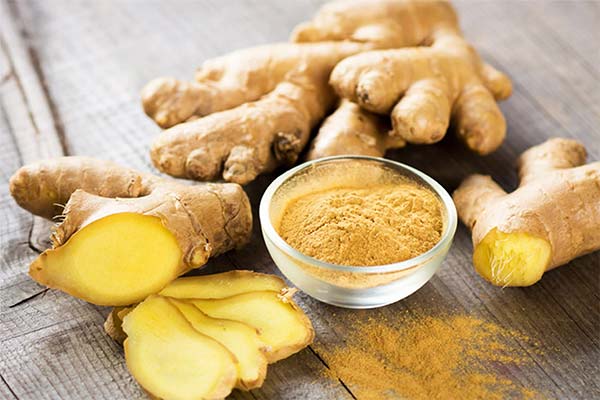
The plant has a rich root system. The root of ginger is yellow or purple with a gray tint. It has been used as a spice since ancient times. The name translates to "white root". If you look at it from the other side, ginger is:
- root, which is used in raw or pickled form;
- The apothecary kind, which we use.
The homeland of ginger is South Asia. It was brought to Russia by merchants, who told us that it grows on the very edge of the world. Thanks to the traders, ginger has always had a halo of mystery and mythicism around it. Nowadays, it comes to Russia mainly from China and India.
Scientists have fully studied the composition and healing qualities of the plant. It contains many macro- and microelements, which are not present in products grown in our country. The following substances are found in the composition of ginger:
- A rich complex of linoleic, oleic, nicotinic acids.
- Vitamins of group C and B, as well as a high content of thiamine, riboflavin, pyridoxine.
- Alkaloids, which have anti-inflammatory properties.
- Increased content of molybdenum, selenium, phosphorus, magnesium and chromium.
- Fiber and essential oils.
It also contains such a rare substance as gingerol. It speeds up the metabolic processes and can stop inflammation in the body. It is the reason why ginger has such a rich and characteristic taste.
Types
All varieties are divided into three main types - medicinal, decorative and for eating. In pharmacology, apothecary ginger is used to produce medicines. The Zerumbet variety is mainly used for cooking. It has variations depending on the country of cultivation. In Japan, for example, Zerumbet Myoga, but only the buds of this plant are edible. India and Thailand eat the roots of Zerumbet Kasumune.
Useful Properties of Ginger
In the distant past, ginger was used to treat various diseases. Even the black plague was healed with it. Modern scientists, having studied the plant, have come to one general conclusion that it has the following properties:
- improves blood flow, blood circulation and blood composition;
- increases the body's defenses (immunity becomes stronger);
- effectively fights stomach gases and heartburn;
- relieves gastric colitis and indigestion;
- Improves the general well-being of a person with diarrhea;
- removes phlegm from the lungs during colds;
- quickly clears the kidneys and liver;
- improves memory and concentration;
- Accelerates cellular and metabolic processes;
- removes harmful cholesterol from the blood vessels;
- fights intestinal parasites.
The set of useful properties of ginger does not end with this list. This is only the main areas of usefulness of ginger root. It is also used in the treatment of mental disorders. It helps to relax and calm the human nervous system.
For example, honey and ginger infused with calming herbs restores moral balance and helps to combat stress and depression, various colds.
On the male and female bodies, it has different effects.
For women
- Ginger helps the female body during pregnancy to cope with nausea and toxemia.
- It is also used to make decoctions that can cheer you up and lift your spirits.
- Ginger root will help you to wake up faster and stay toned for the whole day.
- Another amazing effect on the female body is a rejuvenating effect. For this purpose, you should periodically make masks with it.
- Decoctions of ginger root will help against inflammation in the genital system and reproductive organs, normalize the menstrual cycles of the female body.
For men
- On the male body, ginger also has a beneficial effect.
- It helps to thin the blood, thereby increasing blood flow, strengthens the walls of blood vessels.
- The root is a prophylactic against heart attacks, improves memory and attention.
- With a hangover, an infusion of it is an indispensable remedy.
- Regular use of ginger makes the representatives of the stronger half of mankind more enduring.
This is an excellent preventive tool in the fight against prostatitis.
How to Choose the Right Ginger
Ginger is a plant that is used in cooking not only to give dishes a pleasant spicy taste. It also has a spiciness that gradually begins to enhance the taste of a culinary masterpiece. To do this, you need to use only high-quality and fresh root vegetables. Before you buy it, it is worth familiarizing yourself with some rules to learn how to choose only healthy root vegetables on the store shelves.
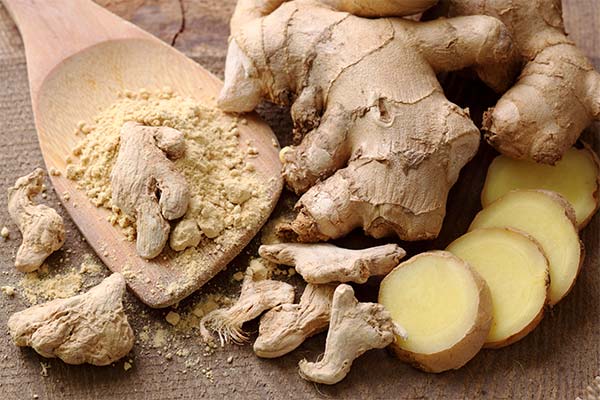
Rule #1
It is necessary to get acquainted with the types of ginger that are sold in stores. This is not insignificant for the right choice of spice.
In most cases, a mature root between 7 and 10 months old is available for sale on the shelves of retail outlets. It has a light brown rind and a yellow flesh with a creamy hue. As a rule, in late spring and early summer, the last late harvest of the plant is ripe.
The ginger root is predominantly large, about 20-30 centimeters. The late harvest fruit has a pungent aroma. It stands out for its higher essential oil content and juicier flavor.
In wintertime, you may come across ginger root with a blue hue. There's nothing wrong with that. It is native to Hawaii and is flavorful and juicy.
The rarest type of ginger for our latitudes is the young ginger root. It is called "spring", "baby". It is cultivated at 3-4 months of age. The skin is a delicate pink color, very delicate, it does not need to be peeled off. The product is excellent for pickling, as it contains fewer coarse fibers. And this is a distinctive quality for further processing.
Rule #2.
Ginger is not essentially a root, but a stem that grows perfectly in the ground. It is sold fresh in the vegetable departments and pickled or dried in the spice department. Many producers grow it year-round. The main thing here is not to make a mistake with the choice of product, so as not to doubt its quality.
The skin of a well-grown and treated plant has a characteristic shine and elasticity. Preference should be given to a product with a thin skin. It should also be dry, plump and firm.
If you take the root in your hand, it is worth choosing one with more mass and density.
You don't have to buy the whole ginger, you can break off the right piece. If it breaks off easily, this is also a kind of confirmation of the freshness of the product.
Rule #3
It's worth refusing to buy if:
- The root is damp or has moldy patches.
- The skin is damaged, wrinkled or lacks a distinctive color.
- The root has a large number of sprouts.
- The ginger is soft when pressed.
These are all signs of poor quality growing or storage.
Rule #4.
It is better to give preference to small pieces, as you need 50 to 100 g to cook it. Larger ones need to be able to store properly.
What foods and drinks you can add ginger to
Each country has its own recipes for making specialty dishes using fresh, dried or pickled ginger. In most cases, the root is grated.
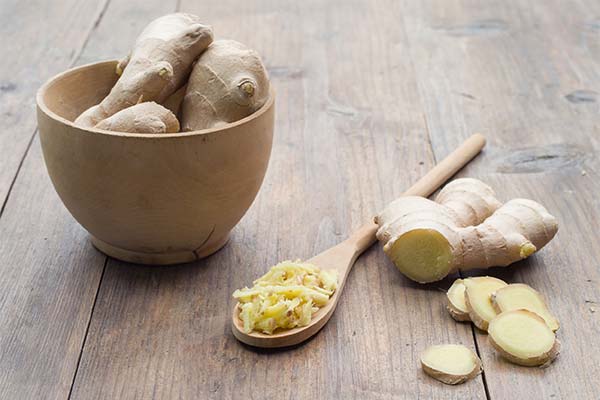
It imparts an exquisite flavor:
- meat;
- fish;
- mushrooms;
- fruits;
- Shish kebab, both poultry and lamb;
- beverages, it is especially good to add it to various teas;
- dough.
The main thing in cooking is a sense of proportion, because if you overdo it with ginger, you can easily end up with numbness of the mucous membrane of the mouth.
By and large, it can be added to many dishes.
What spices does ginger go with?
The tenderness and sweetness of the ginger flavor are fully revealed and complement each other when combined with some spices and herbs. The best duos of flavor and aroma would be ginger:
- With oregano, sage, thyme, basil;
- lemon zest and lemon balm;
- cinnamon;
- allspice and cloves;
- cumin and cardamom;
- coriander.
A guest from India, curry spice already contains about 25% ginger. It also goes well with nutmeg, cayenne pepper and the above spices.
Where not to add
Ginger root should not be added to dishes where more flavorful herbs and spices have been used. It will greatly reduce the flavor of the dish, making it oversaturated. It does not go with garlic, horseradish, dill, parsley, bay leaf.
Before using it with any spice, it is worth familiarizing yourself with the table of seasonings and products. For example, buckwheat grits have their own aroma and flavor, which becomes unpleasant when ginger root is added.
Precautions When Using Ginger
Despite the fact that ginger has a lot of useful properties, it, like any medicinal plant, has contraindications. So, the use of a delicious and fragrant spice should be avoided by people:
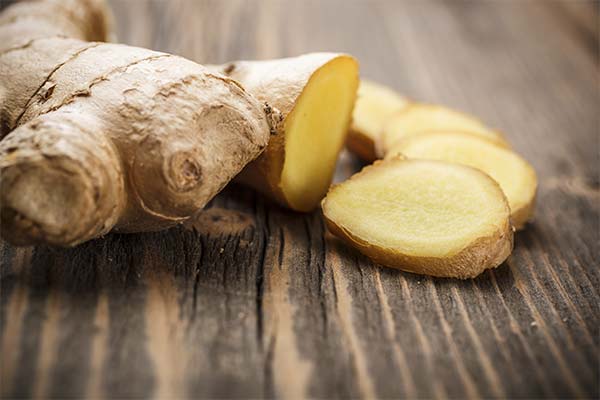
- With pathologies of the mucous membranes of the gastrointestinal tract, as the spice causes exacerbations of ulcers and gastritis.
- In the presence of tumors in the stomach or intestines - ginger acts on them as fuel, which increases the growth rate.
- With hepatitis and other liver diseases, as its use increases the process of inflammation.
- With cholelithiasis - the speed of movement of stones increases.
- With bleeding hemorrhoids and those who are scheduled for surgery, as ginger can cause hemophilia or poor blood clotting.
- With diseases of the heart and vascular system, as the product increases the rate of blood flow through the blood vessels, which leads to increased strain.
- With allergic reactions and individual intolerance to the product.
- With fevers, as it increases the temperature of the body.
People who suffer from any chronic diseases of the stomach and intestines should completely exclude ginger from their diet.
Ginger root should not be eaten by pregnant women during the period from 4 to 9 months. Its consumption can cause heavy bleeding, and its tonic properties can cause premature labor or miscarriage.
If a mother is breastfeeding her baby, she should refuse ginger or use it carefully, as it can cause allergies in the baby.
For children
Giving ginger to young children under the age of four or five is not a good idea, as it can cause irreversible allergic reactions. As a result, the baby will develop a persistent allergy not only to ginger, but also to many other products.
From the age of five you can give children decoctions of ginger to improve immunity to colds and viral diseases.
With medications
Know about the side effects of ginger root is necessary in advance. This is especially true for medications that a person uses a course or systematically. If the medicines are not compatible with the spice, it can cause various kinds of complications, as well as fatal changes in the course of the disease.
So, ginger should not be used when a person is prescribed medicines:
- to eliminate cardiac rhythm disorders;
- beta-adrenoblockers;
- blood pressure lowering drugs;
- against high body temperature.
Norms of ginger consumption
All rates are given for people who have no contraindications.
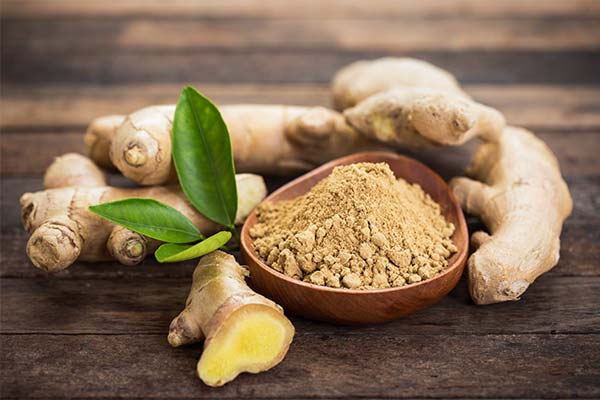
- Adults can eat no more than 20 grams of fresh ginger root per day. If an infusion, decoction, or tea is made, the daily dose increases to fifty. The ground root is divided into four or five doses, but no more than 2 tsp can be eaten in total.
- For children, it is best to start giving it from the age of three, and in some cases from the age of five, but only after consulting with a specialist. A great solution would be a weak tea or candied fruit. Mode of reception - no more than 2-3 times a week. The time of intake - until 16-00.
Ginger contains a lot of useful substances that do not cause any harm to the body. The exceptions are severe or chronic diseases.
The composition of the ginger root is very diverse, it contains vitamins and amino acids, as well as macro-and micronutrients, and in addition almost half of the periodic table, so you should be extremely careful with the use of this unique plant. The daily rate should not exceed the norms of consumption, written above. It is also necessary to pay attention to the state of your body.
Ginger and weight loss
Internet portals are full of headlines "Lose weight in 7 days by 10, 15, 20 kilograms. So be able to lose weight no one and never. But there are recipes that actually help you lose a couple or even three extra pounds.
Recipe 1: Tea with aromatic mint and spicy ginger
Boil 2 liters of filtered water in a kettle. Ginger peel and cut into thin petals. Add it to the kettle and let it boil for about 15 minutes. Then turn off the heat and add the mint. It can be fresh or dried. Let the tea brew in the heat for 12 hours.
Recipe 2: Tea with Sunny Lemon and Ginger
Lemon juice helps to burn harmful fat deposits and tone the body throughout the day. Put 1 liter of water to boil and cut into thin slices a three-inch piece of ginger. Preliminarily peel it from the skin. It will be ideal if the slices are thin. Add the ginger to the water and cook for about 15 minutes. Then turn off the heat and let cool to about 90 degrees Celsius. While the broth is cooling, take a piece of lemon and process it with boiling water. After that, cut it into thin slices. Both decoction and lemon pour into a thermos, close the lid and let infuse about three hours.
Recipe 3: ginger-apple tea
Grate ginger on a grater. Put it in hot water and add some cinnamon sticks. After boiling for 5-7 minutes on low heat. Now move on to the apple. It must be large and must be sour. Also grate it. Add to the water, cover with a lid. Let it infuse for about 30-40 minutes, at the end add 2 tsp. of flavored honey.
To lose weight you need to follow the scheme of taking tea:
- One mug of tea half an hour before a meal (before breakfast).
- A glass of drink at half past twelve.
- A mug of flavored drink after dinner.
- The last intake of tea at five o'clock in the evening.
Ginger root tea is drunk throughout the day in small sips instead of regular water. During the whole day, you can drink about 2 liters of tea. But do not drink the drink in such quantities for more than a week. It is obligatory to make a three-day break.
Ginger diet
Together with tea decoctions, it is best to use the so-called ginger diet. It includes a few simple rules.
- Giving up fatty, sweet, smoked and salty foods.
- It is best to eat in small portions 5 or 6 times a day.
- Count calories. Their number should not exceed 1500-2000.
If you foresee eating dried ginger during the diet, you should pay attention to the fact that you need half as much as fresh ginger. It is more concentrated and ends up having a more specific flavor.
Pickled Ginger
Everyone is familiar with pickled ginger. But in most cases we buy it ready-made, because we simply do not know how to pickle it properly. The recipe for this oriental spice is quite simple. The most common is presented below.
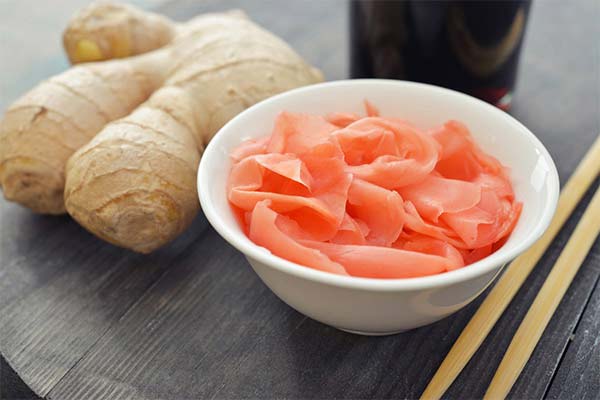
- Slice ginger in an amount of 200-250 g. Excellent if the slices are thin and long.
- Take 1/4 cup of rice vinegar, to which add 2 tsp. salt and 3 tbsp. sugar, boil for 15 minutes.
- Pour the sliced ginger in the brine, and then let it cool.
- Put it in a cold place and let it infuse for 7-8 hours.
Despite the fact that ginger has tightly entered our lives, many are still its opponents, because the specific aroma and taste is not to everyone's liking. But every day the circle of its admirers is increasing. This has happened in recent years thanks to the emergence of a rich assortment of sushi and rolls of Japanese cuisine. But even when ordering a delicious set, you should not rush into a small slide of pink spice. It should be treated with the utmost care.
No matter what kind of ginger you choose, be sure that if you choose it correctly and find an approach to it, your culinary abilities will be appreciated by all members of your family. And teas containing this spicy plant will warm up cold winter evenings.
«Important: All information on this site is provided solely for informational purposes. Please consult with a health care professional before using any of our recommendations. specialist before using any of the recommendations. Neither the editors nor the authors shall be liable for any possible harm caused by materials."

